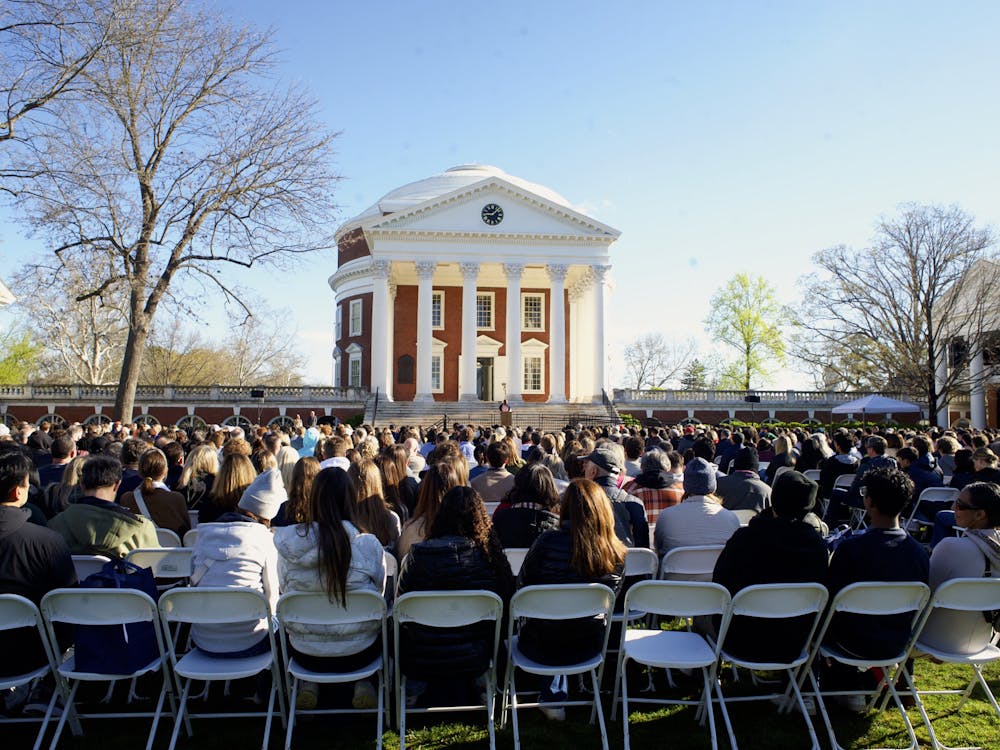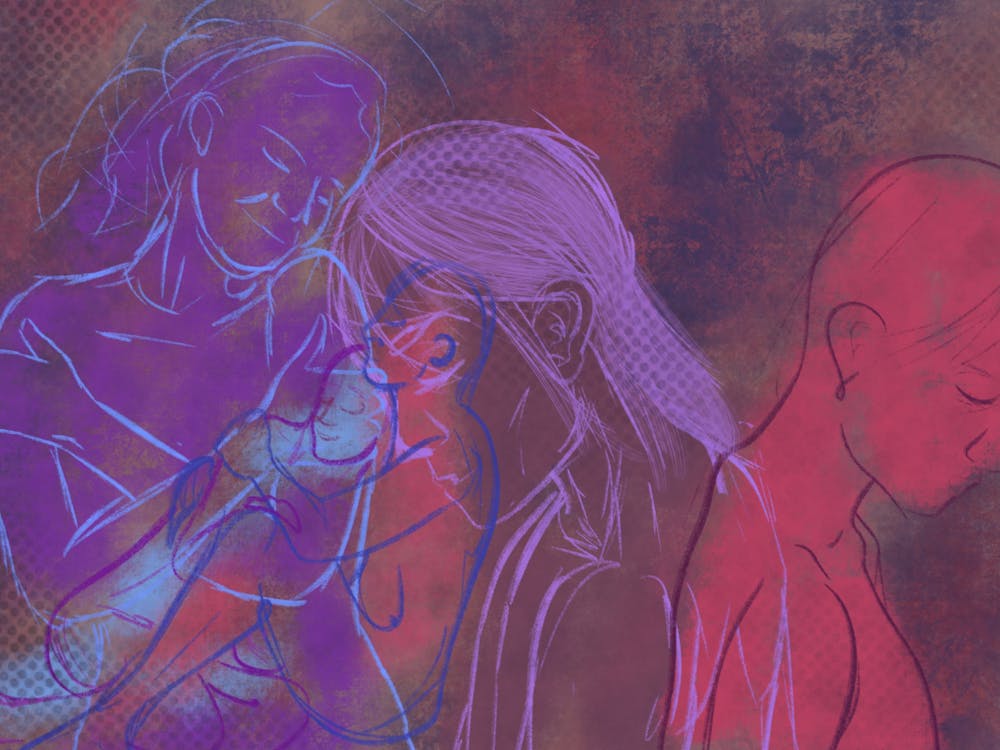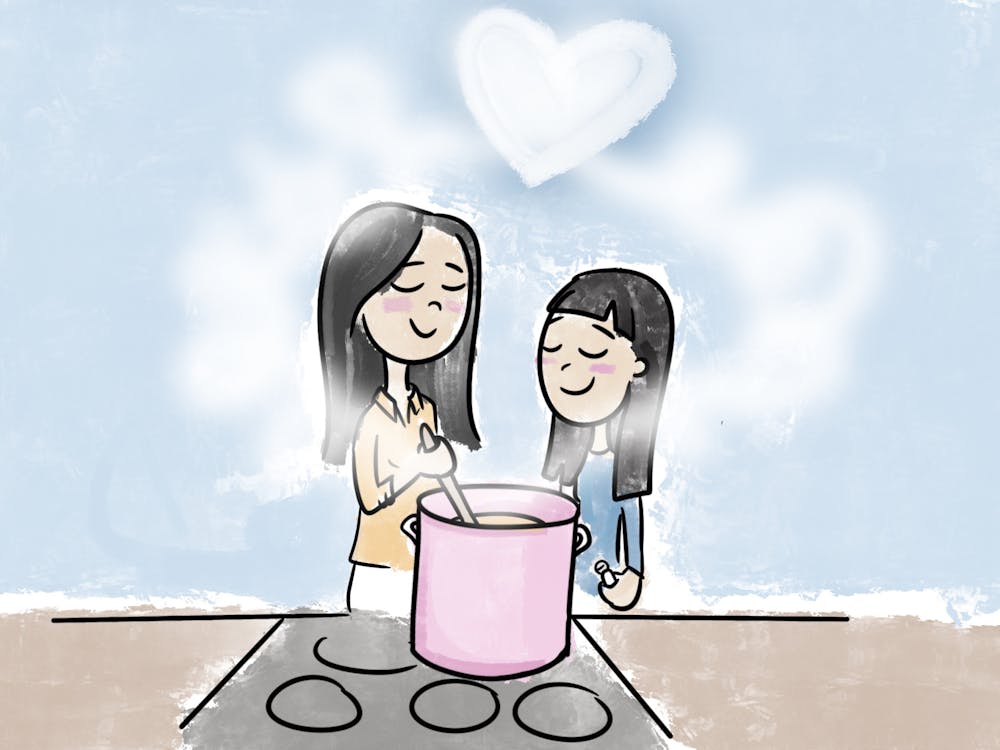The University of Virginia is a place where tradition and change, history and modernity, the classic and the innovative live side-by-side. It is a place where state-of-the-art facilities are built, while Lawn residents continue to walk outside to get to the bathroom. It is a place where new works are written and Thomas Jefferson's are still quoted. It is a place where the Good Ole' Song is still sung, now accompanied by lyrics written out digitally above a stadium which seats over 60,000 people.
The University's ability to embrace lessons of the past while striding into the future is a defining factor, one that makes it a unique place to live and learn.
Three years ago, the Mead Endowment was created to aid the preservation and continuation of one University tradition in particular -- student-faculty interaction and friendship.
The tradition began, in theory, with Jefferson's concept of an Academical Village in which students and faculty worked and lived together in an interactive community. And when Earnest "Boots" Mead, the man who inspired the creation and current efforts of the Mead Endowment, joined the University faculty in 1953, the tradition was continued and strengthened.
The Mead Endowment is made possible by the contributions and efforts of Mead's former students and friends, and a few people who barely know him but believe in the goals of the program, said Tom Darbyshire, chair of the Mead Endowment, who is both a close friend and former student of Mead's.
Darbyshire recalled the conception of the Mead Endowment, which began with the discussions of a group of alumni who have remained close to both Mead and the University.
"We said we really should do something to repay him for everything he has done for us," Darbyshire said.
And when the group sat down to decide exactly what to do, they found themselves searching to define what it is that makes Mead such an excellent teacher and friend -- and they found an answer.
"It was clearly the interest he took in us outside of the classroom ... how special [that interest] is, and our worry that it is becoming increasingly rare," Darbyshire said.
So the Mead Endowment gathered funds, created an Advisory Board and launched a program with the goal of encouraging College faculty to engage and befriend students outside of class. Each year, several faculty members are nominated for their excellence in teaching, and one is chosen to receive a grant that will fund a major project outside of the classroom, featuring student-faculty partnership.
Last Saturday, friends of the Mead Endowment, 10 honored faculty nominees and Mead himself gathered in the Rotunda for dinner and the announcement of this year's two grant winners. Because of a surprise gift from the Seven Society -- who also provided a cake decorated with their symbol for dessert -- the Mead Endowment was able to fund two faculty members' projects, instead of the one they have been able to fund in previous years.
This year Physics Prof. Cass Sackett was awarded funding for a project he proposed that combines the efforts of science and art students to decorate the bare walls of the Physics building.
History Prof. William Thomas will also receive funding for his project -- the making of a documentary film about the Civil Rights era that will involve students as researchers and production staff.
A program distributed at the dinner encouraged all in attendance to, "Walk in the footsteps of Boots." As the evening's speakers rose to celebrate their favorite memories of Ernest "Boots" Mead, it became apparent -- at the risk of a pun overload -- that his are large boots to fill.
Darbyshire, who met Mead while a student at the University, and took his unique fourth-year seminar class twice, recalls that, as a professor, Mead "was never judgmental; whatever students were interested in, he was interested in."
Although Mead officially retired as a University professor in 1996 -- a milestone celebrated by a black-tie affair organized entirely by former students -- he continues to teach his fourth-year seminar class every spring. Darbyshire described the topic of the seminars as "whatever is it that people want to learn about, even if it's something he doesn't know anything about when it starts."
Mead's description of his seminar involves a similar reference to the infinite possibilities for its topic. "A fourth-year seminar ... examines social issues, art, historical events, whatever it might be," he said.
Echoes of this open-ended pursuit of knowledge embraced by Mead's seminars can be heard in the advice he has for students in any class.
"I think it is terribly important that students be informed about whatever the issue is and they must not accept any excuses for ignorance," Mead said. "They are responsible for everything that happens."
To further illustrate this point, Mead pulled from memory a quotation from poet John Donne. The lines he referenced are as follows: "And therefore never send to know for whom the bell tolls; it tolls for thee."
Mead used this quotation to express his belief that students must not turn away when confronted with the unfamiliar, but rather approach and examine it.
"It is so easy to dismiss what one doesn't know," Mead said. "If it's an issue with which you're confronted, you should learn about it to the best of your ability."
As a professor, Mead seeks not only to help every student better understand the world in which he lives, but also to help "a student understand the truth of himself." To do this, Mead engages students in conversation, often listening much more than speaking.
"I challenge [students] to examine what they say and what they think ... to be aware critically of their ideas, to confront sympathetically every issue or subject that comes up," Mead said.
Fittingly, during Darbyshire's days as a student, Mead had a clever way of directing students to his Old Cabell office, which looked out on a view of the Lawn and Rotunda.
"When he met someone that interested him he'd say, 'Come by and visit me in my office. You'll find me just below the truth,'" Darbyshire said. "On the pediment of Old Cabell Hall is an inscription, and one of the words on that inscription is the word 'truth,' and his window is right below the word truth."
Perhaps what Mead does for the students he teaches and befriends -- that which the endowment in his name now seeks to preserve -- can be best summed up through a reference to an anecdote provided by Mead himself. In a speech he gave at a past Mead Endowment dinner, he recalled the story of a moment in which he found himself the student and a young man in his class the teacher. On the final exam for a music course Mead taught -- an Introduction to Bach -- this student chose to write his essay on "The Goldberg Variations," a composition made up of several variations on a theme. Unlike traditional theme and variation pieces, however, the theme in "The Goldberg Variations," is never present by itself, and is found only within the variations.
Mead still remembers the words this particular student wrote at the bottom of his essay: "Mr. Mead, I have experienced the variations in my life, what I'm looking for now is a theme."
With this, one might venture to say that through the real and rare relationships he forms with students, Mead has helped so many with their search for a theme.




